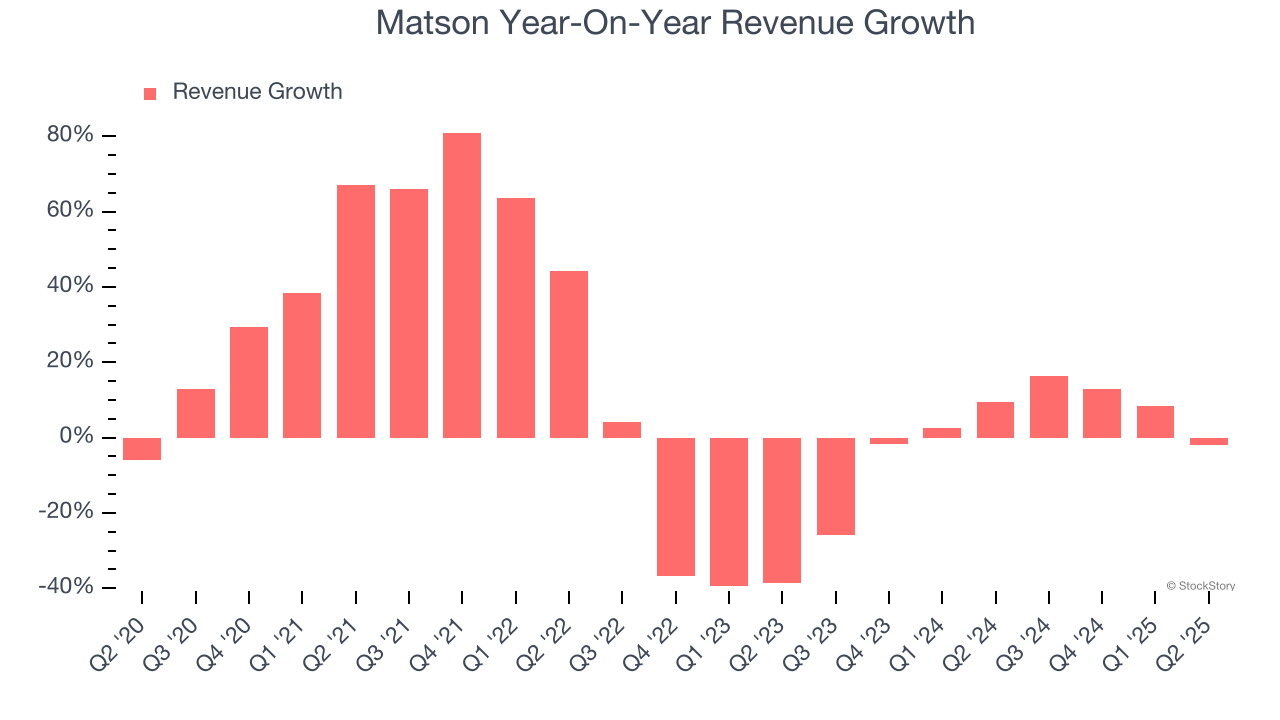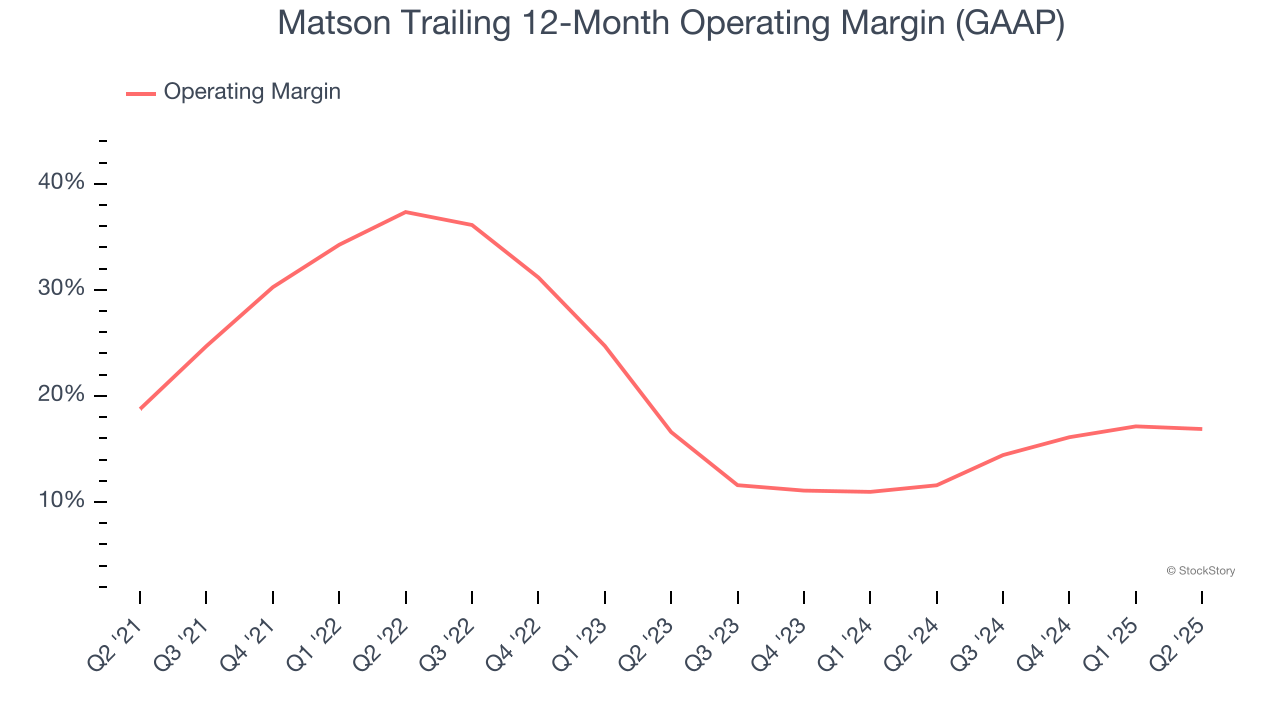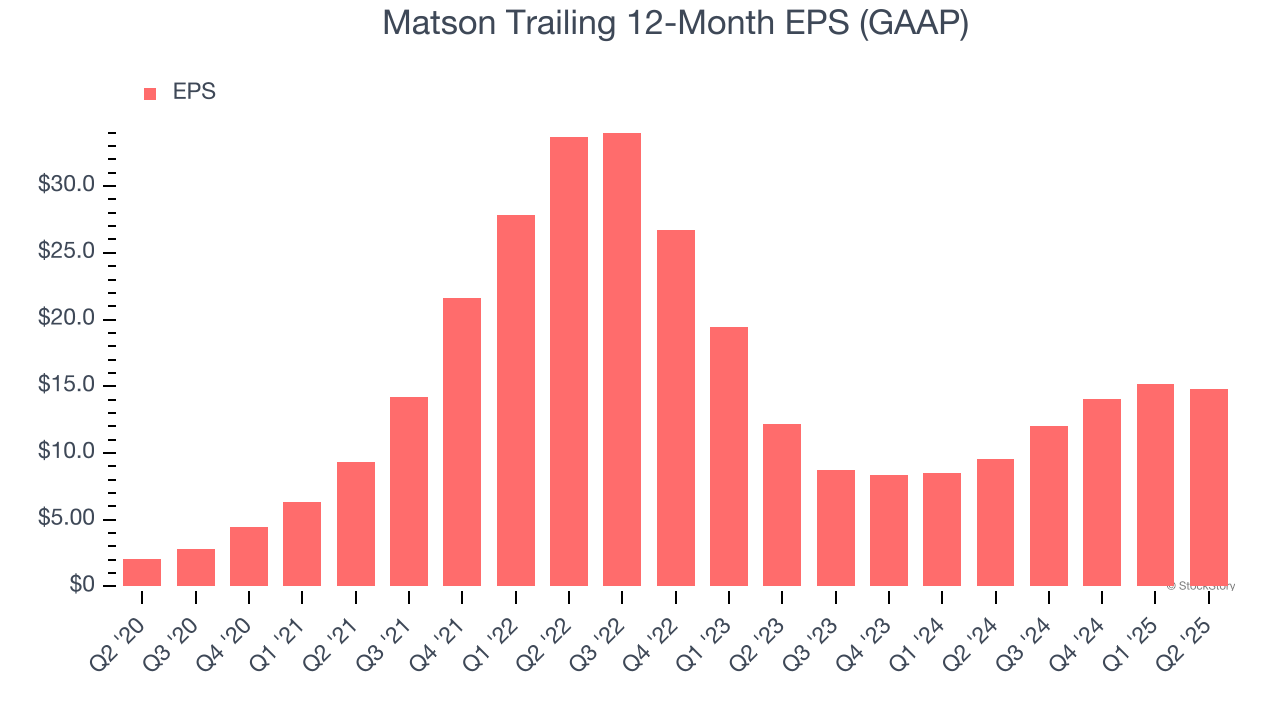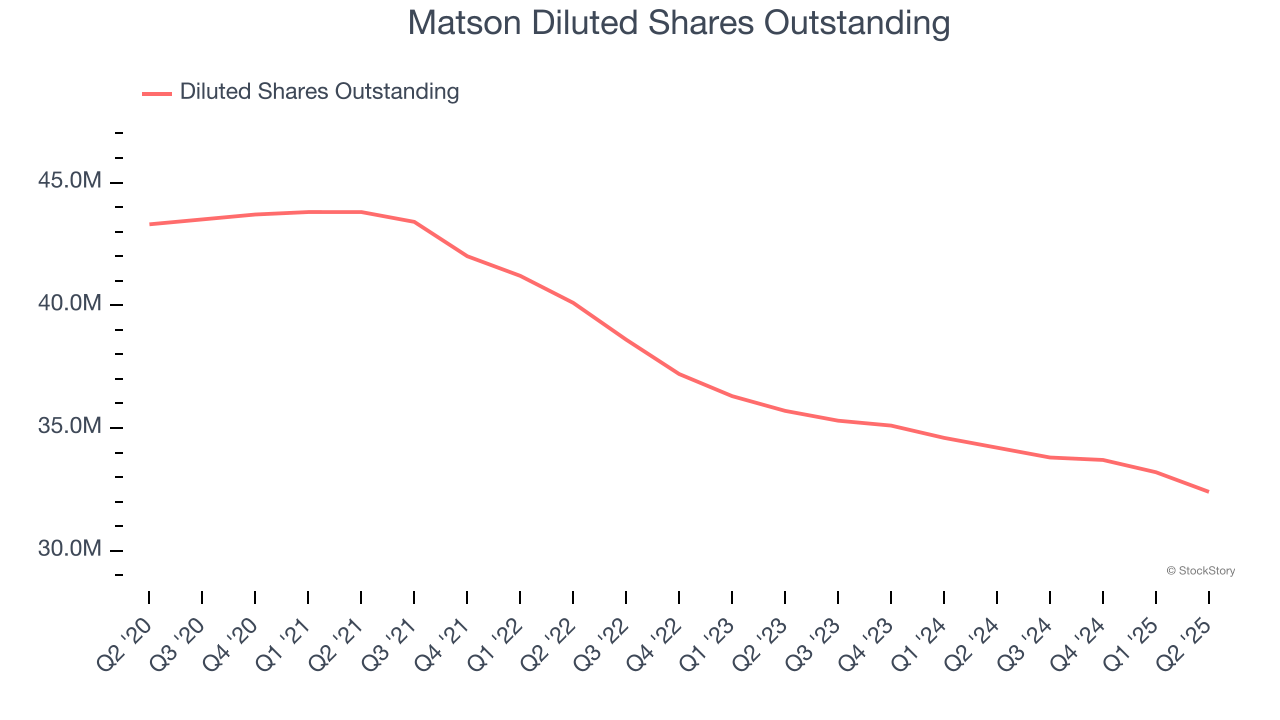
Maritime transportation company Matson (NYSE:MATX) reported revenue ahead of Wall Street’s expectations in Q2 CY2025, but sales fell by 2% year on year to $830.5 million. Its GAAP profit of $2.92 per share was 28.1% above analysts’ consensus estimates.
Is now the time to buy Matson? Find out by accessing our full research report, it’s free.
Matson (MATX) Q2 CY2025 Highlights:
- Revenue: $830.5 million vs analyst estimates of $768.2 million (2% year-on-year decline, 8.1% beat)
- EPS (GAAP): $2.92 vs analyst estimates of $2.28 (28.1% beat)
- Adjusted EBITDA: $163.6 million vs analyst estimates of $136.5 million (19.7% margin, 19.8% beat)
- Operating Margin: 13.6%, down from 14.7% in the same quarter last year
- Free Cash Flow Margin: 2.3%, down from 28.1% in the same quarter last year
- Market Capitalization: $3.48 billion
Matt Cox, Matson's Chairman and Chief Executive Officer, commented, "Our second quarter financial performance exceeded our expectations amid the challenges of market uncertainty and volatility arising from tariffs and global trade. In Ocean Transportation, our operating income was lower year-over-year primarily due to lower year-over-year volume in our China service. At the onset of tariffs in April, our China service experienced significantly lower year-over-year freight demand, but starting in mid-May our Transpacific services saw a rebound in demand after the U.S. and China agreed to a temporary reduced level of tariffs. During the second quarter, we also moved with our customers as they shifted production throughout Asia in response to the tariffs, which resulted in higher container volume levels outside of China than the levels achieved in the first quarter."
Company Overview
Founded by a Swedish orphan, Matson (NYSE:MATX) is a provider of ocean transportation and logistics services.
Revenue Growth
Reviewing a company’s long-term sales performance reveals insights into its quality. Any business can put up a good quarter or two, but many enduring ones grow for years. Luckily, Matson’s sales grew at a solid 10% compounded annual growth rate over the last five years. Its growth beat the average industrials company and shows its offerings resonate with customers.

We at StockStory place the most emphasis on long-term growth, but within industrials, a half-decade historical view may miss cycles, industry trends, or a company capitalizing on catalysts such as a new contract win or a successful product line. Matson’s recent performance shows its demand has slowed as its annualized revenue growth of 1% over the last two years was below its five-year trend. We also note many other Marine Transportation businesses have faced declining sales because of cyclical headwinds. While Matson grew slower than we’d like, it did do better than its peers. 
This quarter, Matson’s revenue fell by 2% year on year to $830.5 million but beat Wall Street’s estimates by 8.1%.
Looking ahead, sell-side analysts expect revenue to decline by 8.6% over the next 12 months, a deceleration versus the last two years. This projection is underwhelming and implies its products and services will see some demand headwinds.
Unless you’ve been living under a rock, it should be obvious by now that generative AI is going to have a huge impact on how large corporations do business. While Nvidia and AMD are trading close to all-time highs, we prefer a lesser-known (but still profitable) stock benefiting from the rise of AI. Click here to access our free report one of our favorites growth stories.
Operating Margin
Operating margin is one of the best measures of profitability because it tells us how much money a company takes home after procuring and manufacturing its products, marketing and selling those products, and most importantly, keeping them relevant through research and development.
Matson has been a well-oiled machine over the last five years. It demonstrated elite profitability for an industrials business, boasting an average operating margin of 21.7%. This result was particularly impressive because of its low gross margin, which is mostly a factor of what it sells and takes huge shifts to move meaningfully. Companies have more control over their operating margins, and it’s a show of well-managed operations if they’re high when gross margins are low.
Analyzing the trend in its profitability, Matson’s operating margin decreased by 1.9 percentage points over the last five years. Many Marine Transportation companies also saw their margins fall (along with revenue, as mentioned above) because the cycle turned in the wrong direction. We hope Matson can emerge from this a stronger company, as the silver lining of a downturn is that market share can be won and efficiencies found.

This quarter, Matson generated an operating margin profit margin of 13.6%, down 1.1 percentage points year on year. Since Matson’s gross margin decreased more than its operating margin, we can assume its recent inefficiencies were driven more by weaker leverage on its cost of sales rather than increased marketing, R&D, and administrative overhead expenses.
Earnings Per Share
Revenue trends explain a company’s historical growth, but the long-term change in earnings per share (EPS) points to the profitability of that growth – for example, a company could inflate its sales through excessive spending on advertising and promotions.
Matson’s EPS grew at an astounding 48.6% compounded annual growth rate over the last five years, higher than its 10% annualized revenue growth. This tells us the company became more profitable on a per-share basis as it expanded.

We can take a deeper look into Matson’s earnings to better understand the drivers of its performance. A five-year view shows that Matson has repurchased its stock, shrinking its share count by 25.2%. This tells us its EPS outperformed its revenue not because of increased operational efficiency but financial engineering, as buybacks boost per share earnings. 
Like with revenue, we analyze EPS over a more recent period because it can provide insight into an emerging theme or development for the business.
For Matson, its two-year annual EPS growth of 10.1% was lower than its five-year trend. We still think its growth was good and hope it can accelerate in the future.
In Q2, Matson reported EPS at $2.92, down from $3.31 in the same quarter last year. Despite falling year on year, this print easily cleared analysts’ estimates. We also like to analyze expected EPS growth based on Wall Street analysts’ consensus projections, but there is insufficient data.
Key Takeaways from Matson’s Q2 Results
We were impressed by how significantly Matson blew past analysts’ revenue, EPS, and EBITDA expectations this quarter. Zooming out, we think this print featured some important positives. Investors were likely hoping for more, and shares traded down 1.8% to $104.96 immediately following the results.
Is Matson an attractive investment opportunity right now? The latest quarter does matter, but not nearly as much as longer-term fundamentals and valuation, when deciding if the stock is a buy. We cover that in our actionable full research report which you can read here, it’s free.
